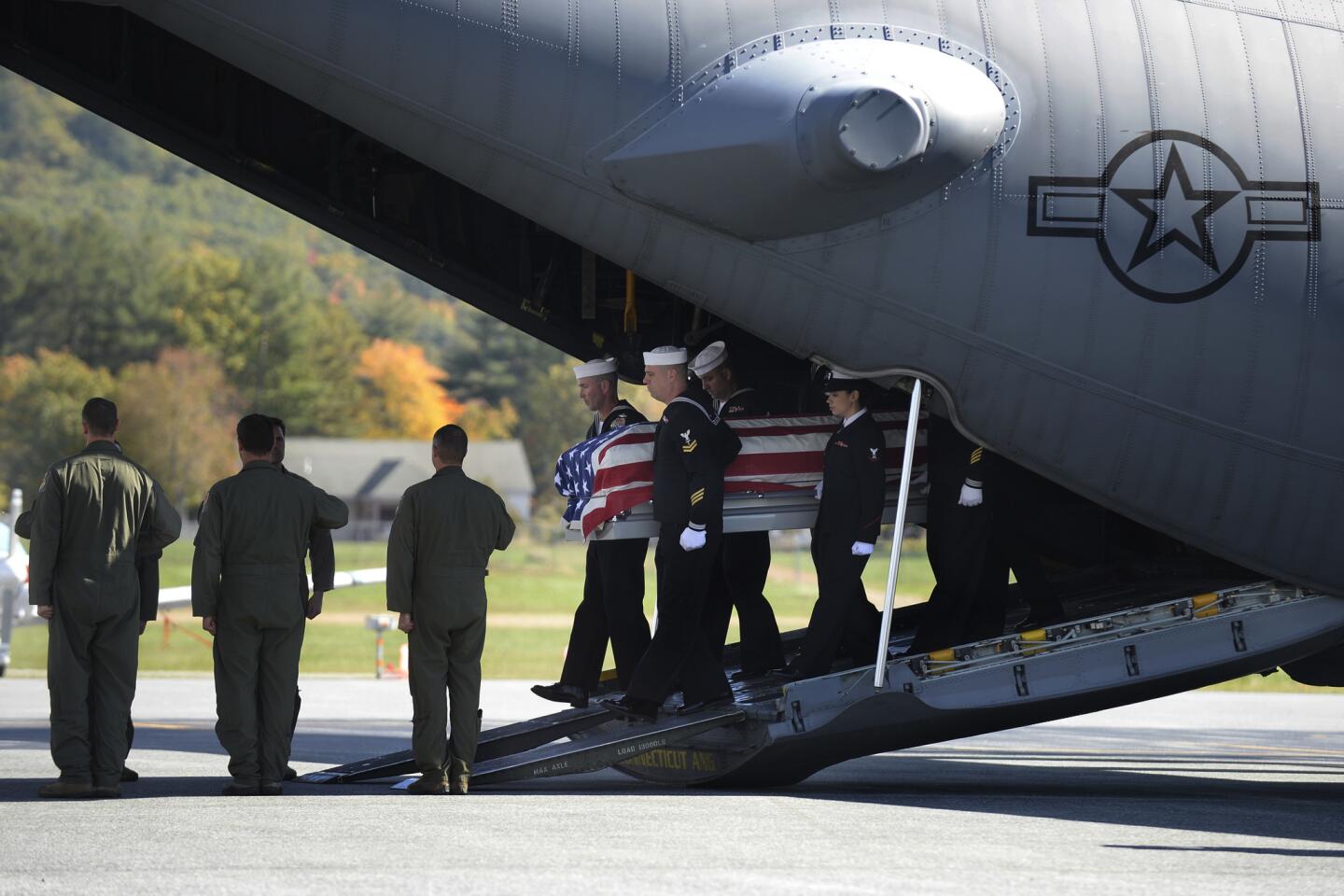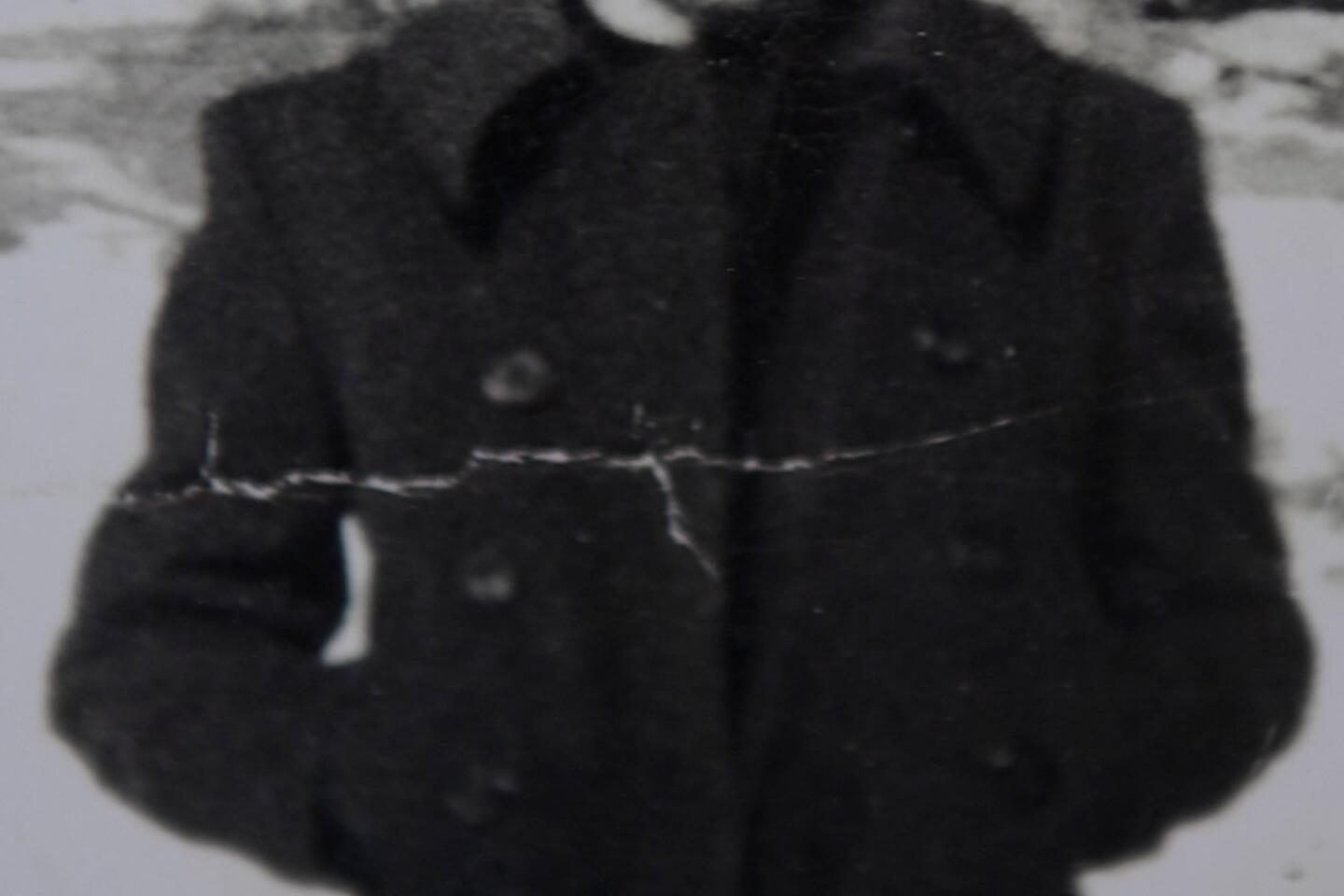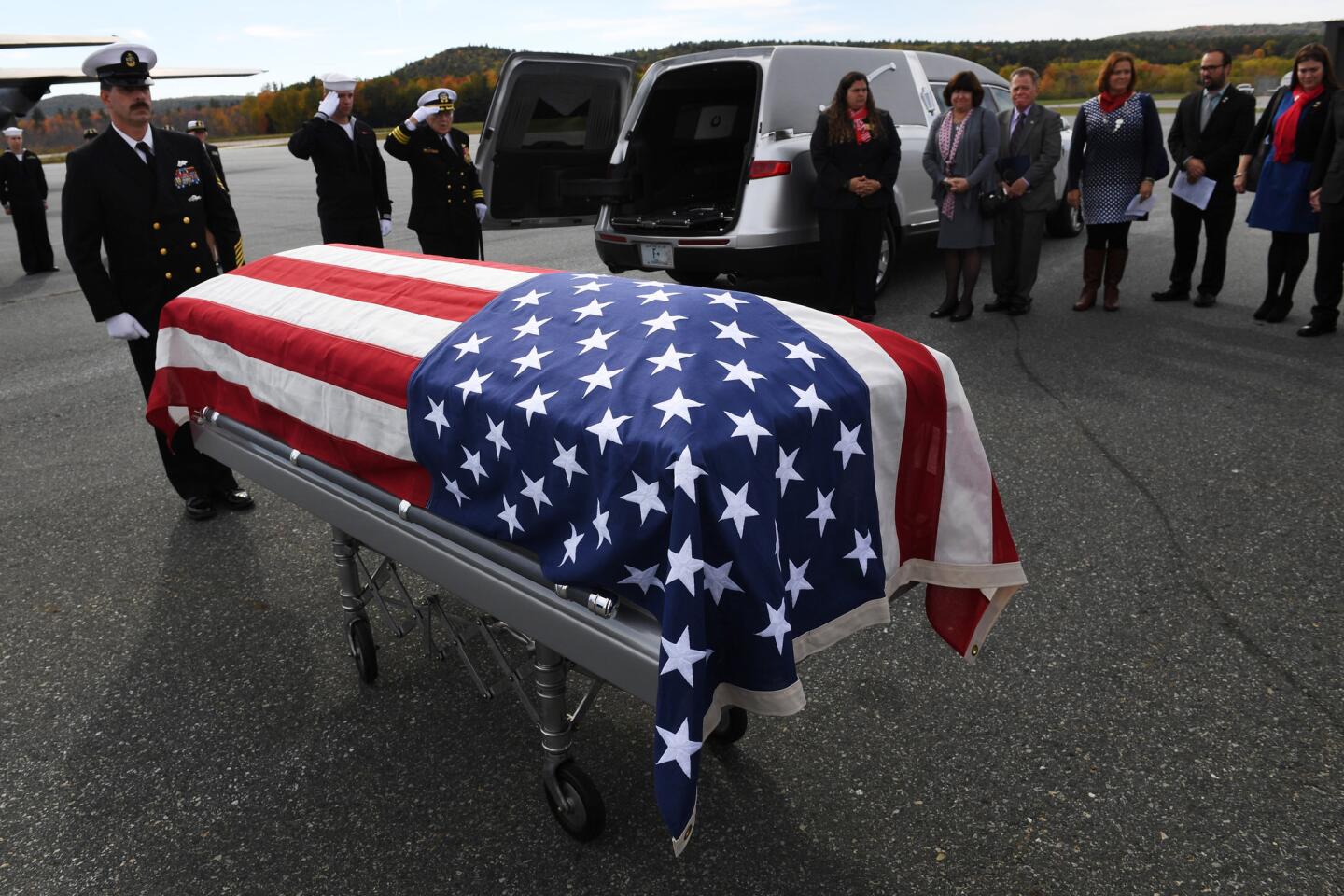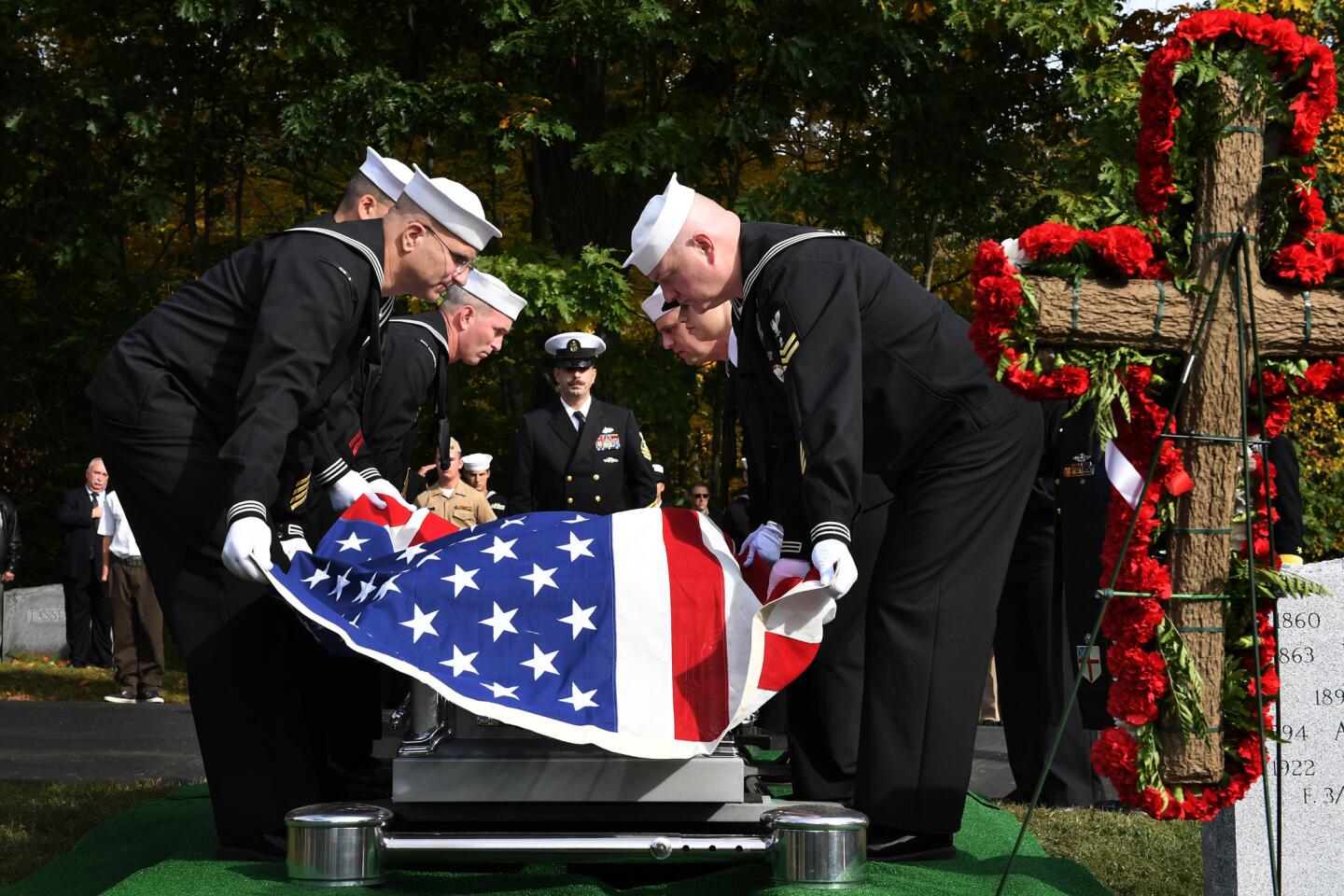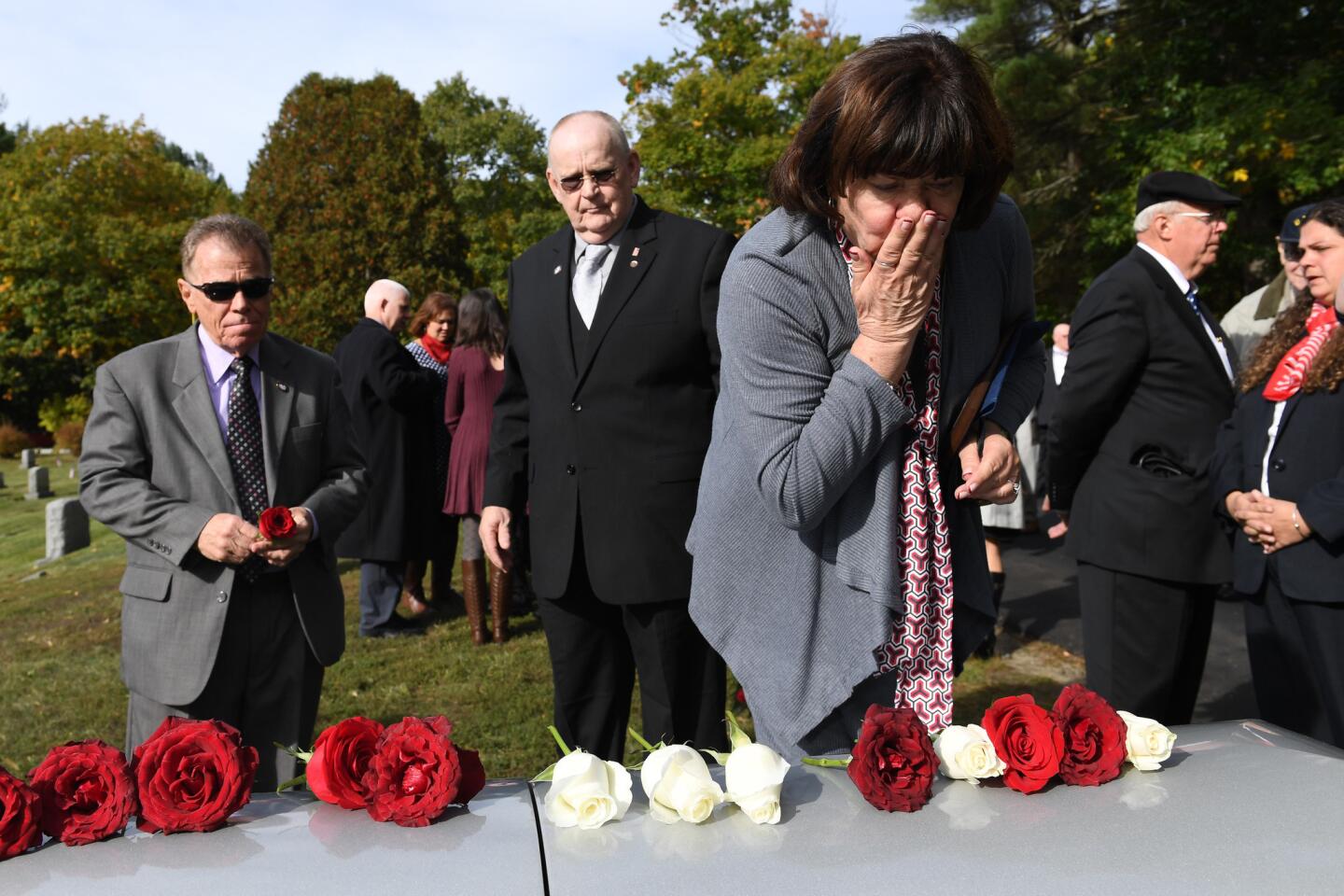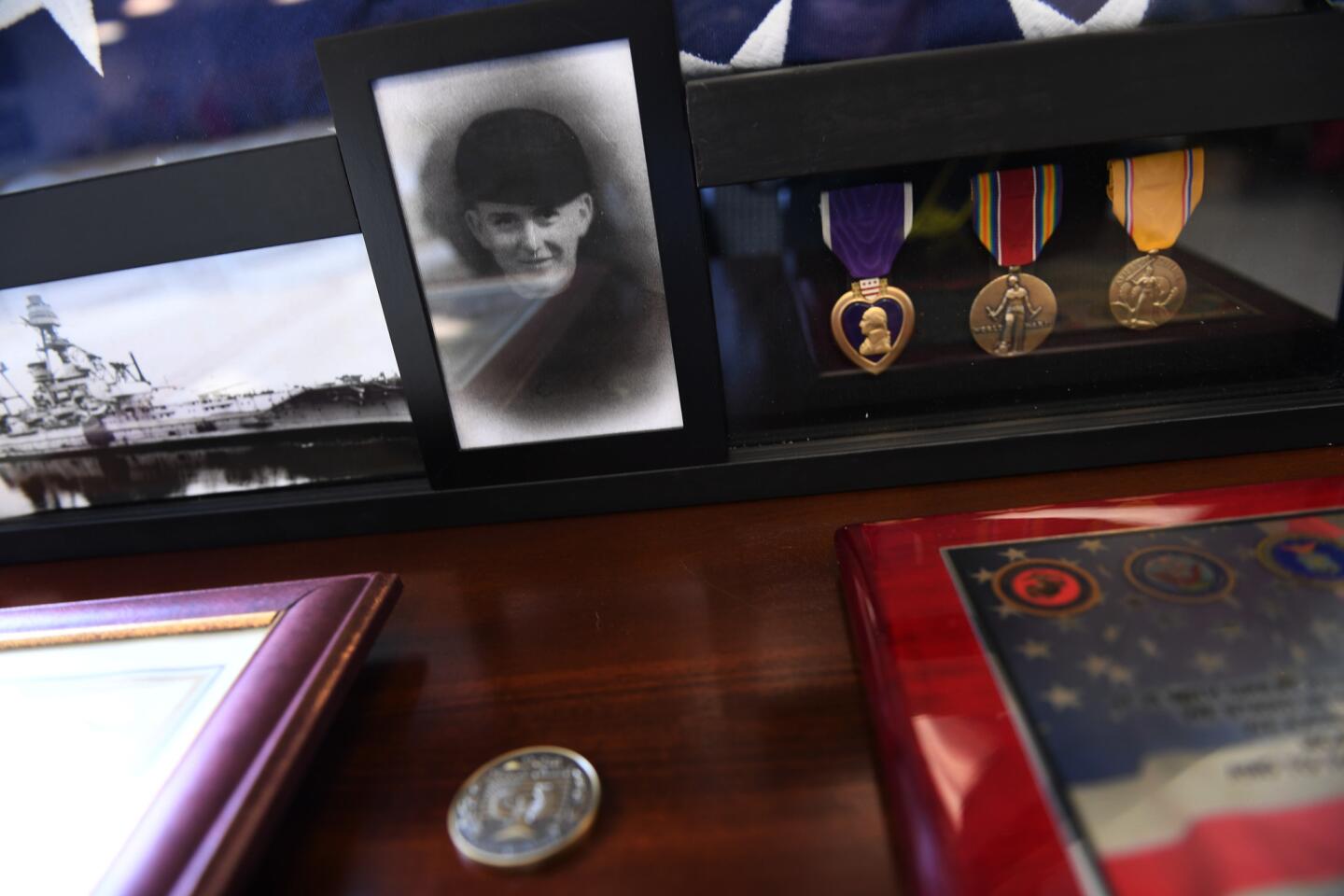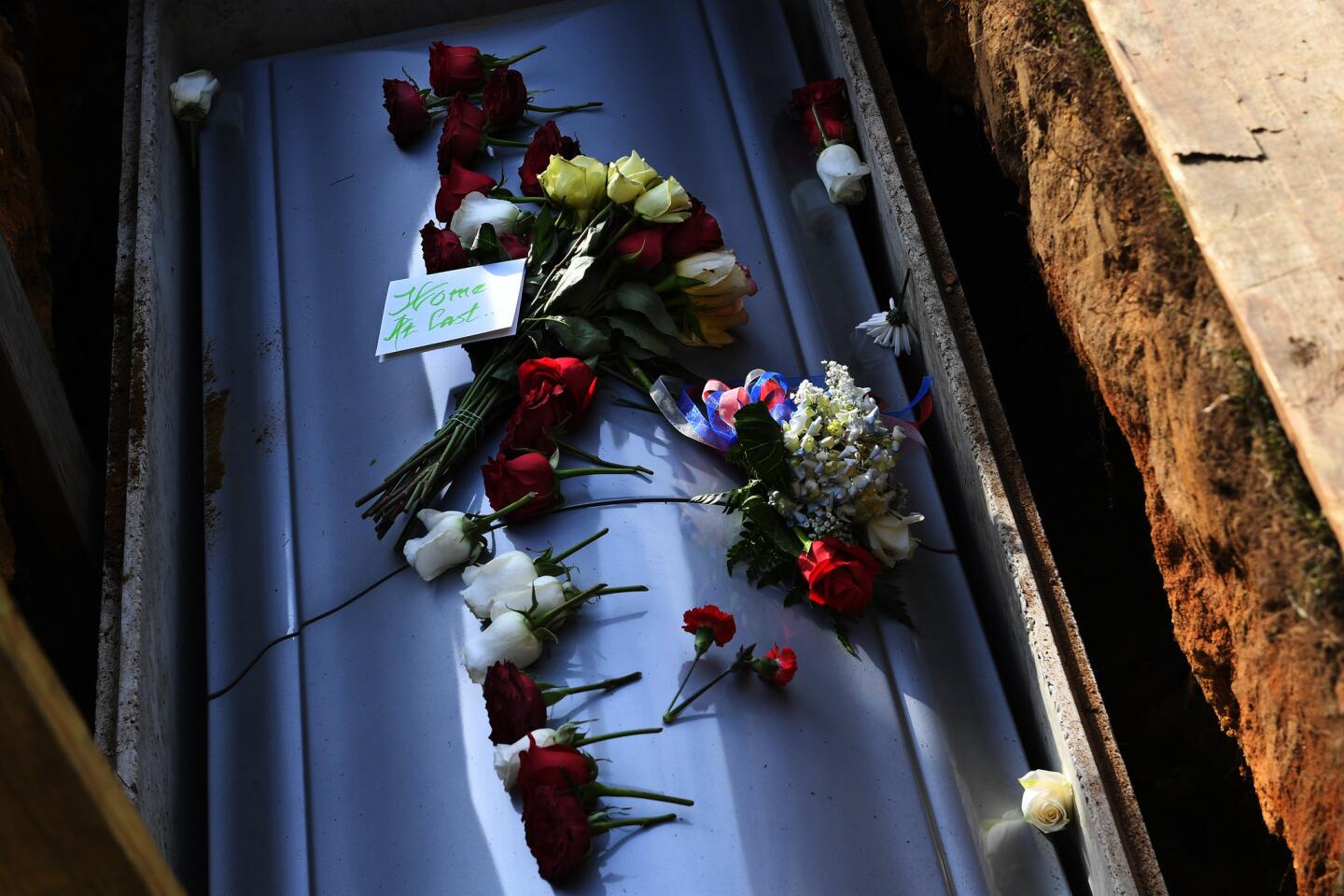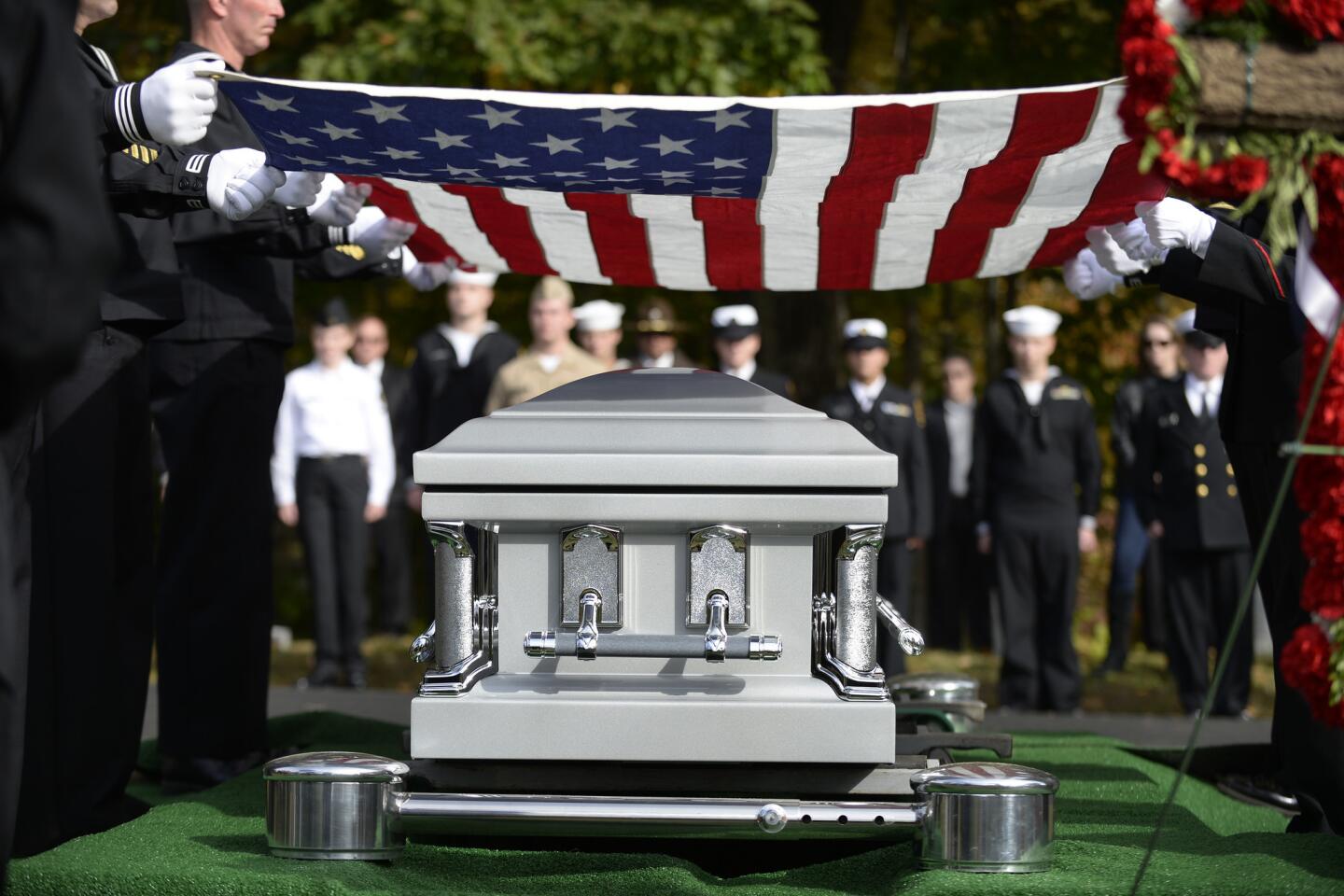‘Welcome home, Uncle Ed’: The remains of this Pearl Harbor sailor — and many others — are finally coming home
- Share via
Reporting from Keene, N.H. — Edwin Chester Hopkins’ casket was draped with an American flag that had hung above the state Capitol. Boy Scouts saluted as the motorcade weaved around the colonial town square to the cemetery, where a military bugler readied to play taps in the dappled sunlight of a cool autumn day.
It was a grand funeral, one of the most memorable this New England town had witnessed, for a young man who had perished just past his 19th birthday. All that was lacking were the copious tears one would expect for someone whose death was so tragic and premature.
None of the several hundred mourners had met Hopkins, not even his near relatives. He was truly an unknown soldier, but the sense of loss, of what might have been, was still palpable. Hopkins was one of 2,403 Americans killed during the Japanese attack on Pearl Harbor on Dec. 7, 1941, the date that would live in infamy.
His ship, the Oklahoma, suffered five torpedo hits, capsized and rolled over with its mast touching the bottom. By the time crews salvaged it two years later, the nation was in the thick of World War II, and nobody had the time, inclination or technical means to sort out the entangled remains of the 429 crewmen dead.
Hopkins’ funeral in mid-October this year was the result of decades of lobbying by family members and POW advocates, as well as leaps in forensic science. As the nation prepares to mark the 75th anniversary of the surprise attack, more and more of those who died that day are finally returning home.
This year alone, the remains of more than 20 sailors from the Oklahoma have been identified and reburied with full military honors — some at Arlington National Cemetery and others at their hometowns.
Eddie Hopkins was 18 in 1940 when he dropped out of high school and enlisted in the Navy. His older brother, Frank, had joined six months earlier. Their decisions were motivated as much by pragmatism as patriotism.
Although their postcard-perfect hometown, renowned for its brilliant fall foliage, now draws thousands of weekend tourists to its quaint bed-and-breakfasts, back then it was barely recovered from the Great Depression. There were dairy farms, cornfields, a woolen mill and a small company that manufactured crates and buckets, but hardly any jobs for a young man with ambition.
Hopkins wrote on his enlistment papers that he had chosen the Navy because he “wanted to learn a trade.’’ After three months of training in Detroit and Chicago, he earned the rank of fireman third class.
His last communication, dated Sept. 9, 1941, as he was about to board a train to San Francisco harbor, was a postcard of the Oklahoma, the message scrawled in a childish cursive that scrunched up to save space at the bottom, and he mailed with a 1-cent stamp.
Dear Folks. Here is the picture of the ship I am going to be on.… We are all ready to leave tonight at nine o’clock, Love Eddie.
::
Hopkins’ brother, Frank, had three children, and they knew little about the uncle killed at Pearl Harbor. It was a topic their father, a taciturn man, and grandparents, flinty Yankees, were reluctant to discuss.
“It was the white elephant in the room. Nobody talked about it,’’ said Edwin Hopkins Jr., 72, a retired Navy yard worker who lives in New Jersey and was named after the uncle he never knew.
“My grandparents were New Englanders who hid everything inside and covered it with a smile,’’ said Faye Hopkins-Boore, 70, his sister, who lives in Lewes, Del.
The unspoken death haunted the family. “I bought a Subaru when I was 35 years old, and I was afraid to tell my grandmother,’’ Hopkins-Boore recalled. Each year when Dec. 7 rolled around, she would switch off the radio and television to avoid reminders of the anniversary.
It was not that Hopkins’ death was forgotten. Dillant-Hopkins Airport, adjacent to Keene, had been named for Hopkins and another local son killed in World War II. But the man, or the boy as it were, was something of a cipher. Had he ever been in love? What were his ambitions? There were only a handful of photos of the teenage Eddie, skinny and jug-eared with a long nose and a cowlick sprouting from the back of his head.
An energetic, take-charge type, Hopkins-Boore had time on her hands after she retired as an operating room nurse, and decided to make it her mission to find out more about this uncle and what happened to his remains.
Each time her grandparents had moved, first from the farmhouse to downtown Keene, and then to Florida, she rummaged through drawers and suitcases looking for old letters. She found nothing — only that last postcard with the picture of the Oklahoma.
But as her father aged, slipping into dementia in his final years, it was like opening a time capsule of the past. The memories spilled out: The one-room schoolhouse he and Eddie attended as children. The frozen stream where they ice-skated. How Eddie raised a calf for the 4-H club and named it Helicopter Petunia. The way Eddie on a dare hiked to the top of nearby Mt. Monadnock and then did it again on another dare.
The brothers were nothing alike in appearance or personality. Frank was barrel-chested, quiet and cautious — the family thought the result of post-traumatic stress from the war. Eddie was a smart aleck and, by all accounts, the more charismatic brother. “He had a bit more personality. My grandmother loved him to death,’’ said Edwin Hopkins Jr.
Having no other siblings, the brothers had been extremely close, sharing a bedroom under the eaves of their farmhouse, camping out on the screened front porch on summer nights. They had hoped to be assigned to the same ship, mostly likely the Hornet.
The most surprising story the family heard concerned their grandmother, Alice Sanderson Hopkins, whose lineage could be traced to the Mayflower. The year after Pearl Harbor, she hired a psychic to hold a seance to communicate with her son.
“Somebody is in the room, all wet with his hair standing up,’’ the psychic told the grieving mother, which according to Hopkins-Boore surely referred to Hopkins’ cowlick.
Alice Hopkins died in 1987 at age 93. She had ordered a family gravestone that listed the names of her parents; her husband, who had predeceased her by 20 years; and at the very bottom: “Edwin Chester, their son, F 3/C U.S. Navy, killed Pearl Harbor, Dec. 7, 1941.”
::
Aside from the Arizona, the Oklahoma suffered the most damage and highest casualties in the Pearl Harbor attack. When the ship was turned upright and drained of water in 1943, the salvage crew “literally just shoveled the remains out,’’ said Natasha Waggoner, a spokeswoman for the Defense POW/MIA Accounting Agency.
Then workers did something that modern forensic scientists find inexplicable. They sorted the skeletons by like body parts. “They had been underwater for two years so there was no flesh left. They put skulls with skulls, arm bones with arm bones,’’ Waggoner said.
The various body parts were buried as unknowns in the National Memorial Cemetery of the Pacific, nicknamed the Punchbowl for its setting in an extinct volcano in Hawaii.
Hopkins-Boore had started going regularly to Hawaii, strolling through the graves of about 2,760 unknown soldiers from Pearl Harbor and other conflicts. In 2008, just a few months after her father died, she learned something shocking.
An elderly Pearl Harbor survivor, Ray Emory, had been meticulously combing through mortuary documents and found that the Navy knew all along where some of the casualties were buried. Hopkins was among 22 Oklahoma victims who had been tentatively identified through their dental records in 1943 but buried with unknowns because there was no second source of identification.
“I think if my grandparents and my father had known back then where he was buried, their grieving process would have been easier,’’ Hopkins-Boore said. “I can’t imagine losing a child and not knowing what happened. A part of you might believe maybe they made a mistake, maybe he is in a nursing home with amnesia. Without knowing where the body is, it is a big puzzle in your head.”
At first, the families encountered stiff resistance from the Navy. But after a bureaucratic fight that dragged on for years, Deputy Secretary of Defense Robert O. Work in 2015 issued an order allowing for the Oklahoma remains to be disinterred as part of the Pentagon’s commitment to its “sacred obligation to achieve the fullest possible accounting for U.S. personnel lost in past conflicts.”
It has been painstaking work for the forensic anthropologists in the laboratory in Hawaii to put the skeletons back together. For example, DNA testing revealed that one casket thought to contain five sets of remains actually held remains of about 100 people.
“Due to the commingling, we are still working on trying to individuate remains back to specific people,’’ said Debra Zinni, the laboratory manager and forensic anthropologist, who has also worked on mass graves in the Balkans. Her staff starts with the skulls, which are relatively easy to identify with dental records, then moves on to the limbs, taking accurate measurements to make sure the left and right side are close to mirror images. DNA samples ensure matches are accurate.
Bringing back Hopkins also brought the scattered family members together. The laboratory needed mitochondrial DNA, which comes only from the maternal line, so the family tracked down a distant cousin, a Vermont dairy farmer. Yet another cousin in Connecticut, whom Boore-Hopkins had never met before, had better political connections, so he was deputized to write the nagging letters to various members of Congress to push for the process to be expedited.
On Oct. 15, Hopkins was buried next to the family tombstone his mother had commissioned decades earlier. Naval officials flew in from around the country and veterans of war roared in on motorcycles. Firetrucks put their ladders together to suspend a huge American flag over the entrance to the parking lot at the airport bearing his name.
Delivering the final eulogy, Hopkins-Boore struggled to evoke memories of the unknown sailor. “I’d like to tell you what he looked like, how he carried himself. Did he like to whistle like my dad? Did he jingle his keys in his pocket when it was time to go home?’’ she said.
All unanswerable questions. Despite that, or maybe because of it, a few tears came from the crowd of strangers. Then she addressed her uncle directly.
“Most of all I’d just like to say, welcome home, Uncle Ed. Welcome home.”
ALSO
Missing for 95 years, wreckage of the Navy tugboat Conestoga is found off California coast
Relatives of Pearl Harbor victims want military to identify remains
More to Read
Sign up for Essential California
The most important California stories and recommendations in your inbox every morning.
You may occasionally receive promotional content from the Los Angeles Times.
